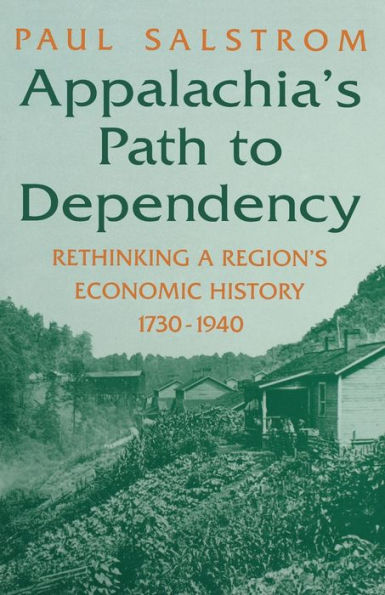Home
Appalachia's Path to Dependency: Rethinking a Region's Economic History, 1730-1940
Barnes and Noble
Loading Inventory...
Appalachia's Path to Dependency: Rethinking a Region's Economic History, 1730-1940 in Franklin, TN
Current price: $35.00

Barnes and Noble
Appalachia's Path to Dependency: Rethinking a Region's Economic History, 1730-1940 in Franklin, TN
Current price: $35.00
Loading Inventory...
Size: OS
In
Appalachia's Path to Dependency
, Paul Salstrom examines the evolution of economic life over time in southern Appalachia. Moving away from the colonial model to an analysis based on dependency, he exposes the complex web of factors—regulation of credit, industrialization, population growth, cultural values, federal intervention—that has worked against the region.
Salstrom argues that economic adversity has resulted from three types of disadvantages: natural, market, and political. The overall context in which Appalachia's economic life unfolded was one of expanding United States markets and, after the Civil War, of expanding capitalist relations.
Covering Appalachia's economic history from early white settlement to the end of the New Deal, this work is not simply an economic interpretation but draws as well on other areas of history. Whereas other interpretations of Appalachia's economy have tended to seek social or psychological explanations for its dependency, this important work compels us to look directly at the region's economic history. This regional perspective offers a clear-eyed view of Appalachia's path in the future.
Appalachia's Path to Dependency
, Paul Salstrom examines the evolution of economic life over time in southern Appalachia. Moving away from the colonial model to an analysis based on dependency, he exposes the complex web of factors—regulation of credit, industrialization, population growth, cultural values, federal intervention—that has worked against the region.
Salstrom argues that economic adversity has resulted from three types of disadvantages: natural, market, and political. The overall context in which Appalachia's economic life unfolded was one of expanding United States markets and, after the Civil War, of expanding capitalist relations.
Covering Appalachia's economic history from early white settlement to the end of the New Deal, this work is not simply an economic interpretation but draws as well on other areas of history. Whereas other interpretations of Appalachia's economy have tended to seek social or psychological explanations for its dependency, this important work compels us to look directly at the region's economic history. This regional perspective offers a clear-eyed view of Appalachia's path in the future.
In
Appalachia's Path to Dependency
, Paul Salstrom examines the evolution of economic life over time in southern Appalachia. Moving away from the colonial model to an analysis based on dependency, he exposes the complex web of factors—regulation of credit, industrialization, population growth, cultural values, federal intervention—that has worked against the region.
Salstrom argues that economic adversity has resulted from three types of disadvantages: natural, market, and political. The overall context in which Appalachia's economic life unfolded was one of expanding United States markets and, after the Civil War, of expanding capitalist relations.
Covering Appalachia's economic history from early white settlement to the end of the New Deal, this work is not simply an economic interpretation but draws as well on other areas of history. Whereas other interpretations of Appalachia's economy have tended to seek social or psychological explanations for its dependency, this important work compels us to look directly at the region's economic history. This regional perspective offers a clear-eyed view of Appalachia's path in the future.
Appalachia's Path to Dependency
, Paul Salstrom examines the evolution of economic life over time in southern Appalachia. Moving away from the colonial model to an analysis based on dependency, he exposes the complex web of factors—regulation of credit, industrialization, population growth, cultural values, federal intervention—that has worked against the region.
Salstrom argues that economic adversity has resulted from three types of disadvantages: natural, market, and political. The overall context in which Appalachia's economic life unfolded was one of expanding United States markets and, after the Civil War, of expanding capitalist relations.
Covering Appalachia's economic history from early white settlement to the end of the New Deal, this work is not simply an economic interpretation but draws as well on other areas of history. Whereas other interpretations of Appalachia's economy have tended to seek social or psychological explanations for its dependency, this important work compels us to look directly at the region's economic history. This regional perspective offers a clear-eyed view of Appalachia's path in the future.

















